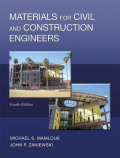
EBK MATERIALS FOR CIVIL AND CONSTRUCTIO
4th Edition
ISBN: 8220102719569
Author: ZANIEWSKI
Publisher: PEARSON
expand_more
expand_more
format_list_bulleted
Question
Chapter 10, Problem 10.7QP
To determine
Write the definition of fiber saturation point, the effect of fiber saturation point on the shrinkage of wood, and the effect of FSP in the properties of lumber.
Expert Solution & Answer
Want to see the full answer?
Check out a sample textbook solution
Students have asked these similar questions
Draw a graph to show the typical stress–strain curve for wood. On the graph,show the modulus of elasticity. State three different factors that affect thisrelationship.
Question 13
Which one of the following statements regarding durability is FALSE?
O a. Use class 5 includes the most challenging service condition for wood.
O b. Biological deterioration includes attack by bacteria, fungi, insects, or moulds.
O c.
Natural durability class 1 has the lowest durability.
Od. The highest risk for wood decay is in wet and warm conditions.
What is Moisture content of wood? What is the relationship between shrinkage and moisture content.
Chapter 10 Solutions
EBK MATERIALS FOR CIVIL AND CONSTRUCTIO
Ch. 10 - What are the two main classes of wood? What is the...Ch. 10 - Prob. 10.2QPCh. 10 - Prob. 10.3QPCh. 10 - Discuss the anisotropic nature of wood. How does...Ch. 10 - Prob. 10.5QPCh. 10 - Prob. 10.6QPCh. 10 - Prob. 10.7QPCh. 10 - Prob. 10.8QPCh. 10 - Prob. 10.9QPCh. 10 - Prob. 10.10QP
Ch. 10 - Prob. 10.11QPCh. 10 - Prob. 10.12QPCh. 10 - Prob. 10.13QPCh. 10 - Prob. 10.14QPCh. 10 - Prob. 10.15QPCh. 10 - Prob. 10.16QPCh. 10 - Prob. 10.17QPCh. 10 - Prob. 10.18QPCh. 10 - Prob. 10.19QPCh. 10 - Prob. 10.20QPCh. 10 - Prob. 10.21QPCh. 10 - Prob. 10.22QPCh. 10 - Prob. 10.23QPCh. 10 - A wood specimen was prepared with actual...Ch. 10 - A pine wood specimen was prepared with actual...Ch. 10 - Prob. 10.26QPCh. 10 - Prob. 10.27QPCh. 10 - Prob. 10.28QPCh. 10 - Prob. 10.29QPCh. 10 - Prob. 10.30QPCh. 10 - Prob. 10.31QPCh. 10 - Prob. 10.32QPCh. 10 - Prob. 10.33QP
Knowledge Booster
Similar questions
- What are the two main classes of wood? What is the main use of each class?State the names of two tree species of each class.arrow_forwardQuestion 34 Which one of these anatomical features of wood cells DOES NOT reduce wood permeability? a. Inter-vessel pits O b. Pit aspiration C. Resin pockets O d. Tylosesarrow_forwardA pine wood specimen was prepared with actual dimensions of 50 mmx50 mm x 250 mm and grain parallel to its length. The deformation was measured over a gauge length of 200 mm. The specimen was subjected to compression parallel to the grain failure. The load- deformation results are shown in table below: Load (kN) Deformation (mm) 8.9 0.457 17.8 0.597 26.7 0.724 34.5 0.838 43 0.965 52.9 1.118 62.01 1.27 71.03 1.422 80.1 1.588 89 1.765 99.6 1.956 108 2.159 111.3 2.311 112 2.456 a. Using a computer spreadsheet program, plot the stress-strain relationship. b. Calculate the modulus of elasticity. С. What is the failure stress?arrow_forward
- Briefly describe why engineered wood is stronger and has better properties than natural wood.arrow_forwardCompute the modulus of elasticity of the wood species whose stress–strainrelationship is shown in Figure 10.12, using both the SI and English units.Compare the results with the typical values shown in Table 1.1 in Chapter 1and comment about the results.arrow_forwardFor the purpose of designing wood structures, laboratory-measured strength properties are adjusted for application conditions. State five different applica-tion conditions that are used to adjust the strength properties.arrow_forward
- please answer these two question 1.Explain the reason that flexural modulus of elasticity and compression test modulus of elasticity must be considered separately when both the flexural test and the parallel to grain compressive test caused normal stresses parallel to the grain of the wood. 2. Discuss the difference between isotropic and orthotropic materials for wood.arrow_forwardA piece of lumber dries in service from 50 percent moisture content to 10 percent. What is the expected shrinkage?arrow_forwardQuestion 8 Mechanical properties of timber are generally NOT dependent on: O a. wood moisture content O b. extractives O c. wood density O d. duration of load O e. temperaturearrow_forward
- A 100 mm * 100 mm wood lumber was subjected to bending with a span of 1.5 m until failure by applying a load in the middle of its span. The load and the deflection in the middle of the span were recorded as shown in Table P10.21. a. Using a computer spreadsheet program, plot the load–deflection relationship. b. Plot the proportional limit on the graph. c. Calculate the modulus of rupture (flexure strength).arrow_forwardC O N S T R U C T I O N M A T E R I A L S A N D T E S T I N G not less than 3 sentences Differentiate softwood from hardwood. What is wood seasoning? Why do wood need to be seasoned? Explain the classification of wood production.arrow_forwardA wood specimen having a square cross section of 2-inch x 2-inch (actual dimensions) was tested in bending by applying a load at the middle of the span, where the span between the simple supports was 28 inches. The deflection under the load was measured (see below). Plot the load versus deflection relationship. Identify the proportional limit on the diagram. Calculate the modulus of rupture. Does the modulus of rupture truly represent the extreme fiber stresses in the specimen? Comment on the assumptions used to compute the modulus of rupture and the actual response of the wood specimenarrow_forward
arrow_back_ios
SEE MORE QUESTIONS
arrow_forward_ios
Recommended textbooks for you
 Construction Materials, Methods and Techniques (M...Civil EngineeringISBN:9781305086272Author:William P. Spence, Eva KultermannPublisher:Cengage Learning
Construction Materials, Methods and Techniques (M...Civil EngineeringISBN:9781305086272Author:William P. Spence, Eva KultermannPublisher:Cengage Learning

Construction Materials, Methods and Techniques (M...
Civil Engineering
ISBN:9781305086272
Author:William P. Spence, Eva Kultermann
Publisher:Cengage Learning